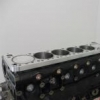Dry Sump Tank Question
Announcements
-
Similar Content
-
Latest Posts
-
Surely the merged entity will be called "Honda" given the relative company values. I've got to be honest, I don't understand how merging 2 companies that missed EVs (despite Nissan making the first mass produced one) will solve their problems
-
By Murray_Calavera · Posted
If you haven't bought the ECU yet, I would strongly consider buying a modern ECU. Yes it is very easy to setup and tune, however it is lacking many of the features of a modern ECU. The pro plug in is something like 10 or 12 years old now? Can't remember exactly but it is very dated now. In that time the Elite was released and now we have the Nexus platform. I would strongly consider not buying the ECU that is 3 generations old now (especially as it isn't a cheap ECU!). -
Im happy for it as long as it means reanult gets the boot
-
By Murray_Calavera · Posted
Sorry I should have been more clear with the previous post. The block is a sanding block - picture something like this https://motorguard.com/product/motor-guard-bgr161-bgr16-1-rigid-psa-sanding-block-2-5-8-x-16/ The guide coat is the paint It's two separate things I was talking about, there is no "block guide coat". -
By Murray_Calavera · Posted
Maybe more accurately, you aren't just dulling the existing paint, you are giving the new paint something to 'grab on to'. By sanding the existing paint, you're creating a bunch of pores for the new paint to hook on to. You can lay new paint over existing paint without sanding it, might last a year or two then sad times. The paint will peal/flake off in huge chunks. By sanding it, the new paint is able to hang onto it and won't flake off. Depends on the primer you are using. When you buy your paint, as the paint supplier what grit of sand paper to use before you lay down the primer. Use whatever you like as a guide coat. Pick a colour that really stands out in contrast to the paint. So say your sanding/painting a currently white car, using a black guide coat would work well. You very lightly lay the black guide coat down, then as you sand the car with the large block, all the high spots and low spots will stand out as the black paint is sanded off (or isn't sanded off). When you buy your paint, hit up your supplier for recommendations for what paint to use for a guide coat if you're unsure what would work well with your setup.
-





Recommended Posts
Create an account or sign in to comment
You need to be a member in order to leave a comment
Create an account
Sign up for a new account in our community. It's easy!
Register a new accountSign in
Already have an account? Sign in here.
Sign In Now